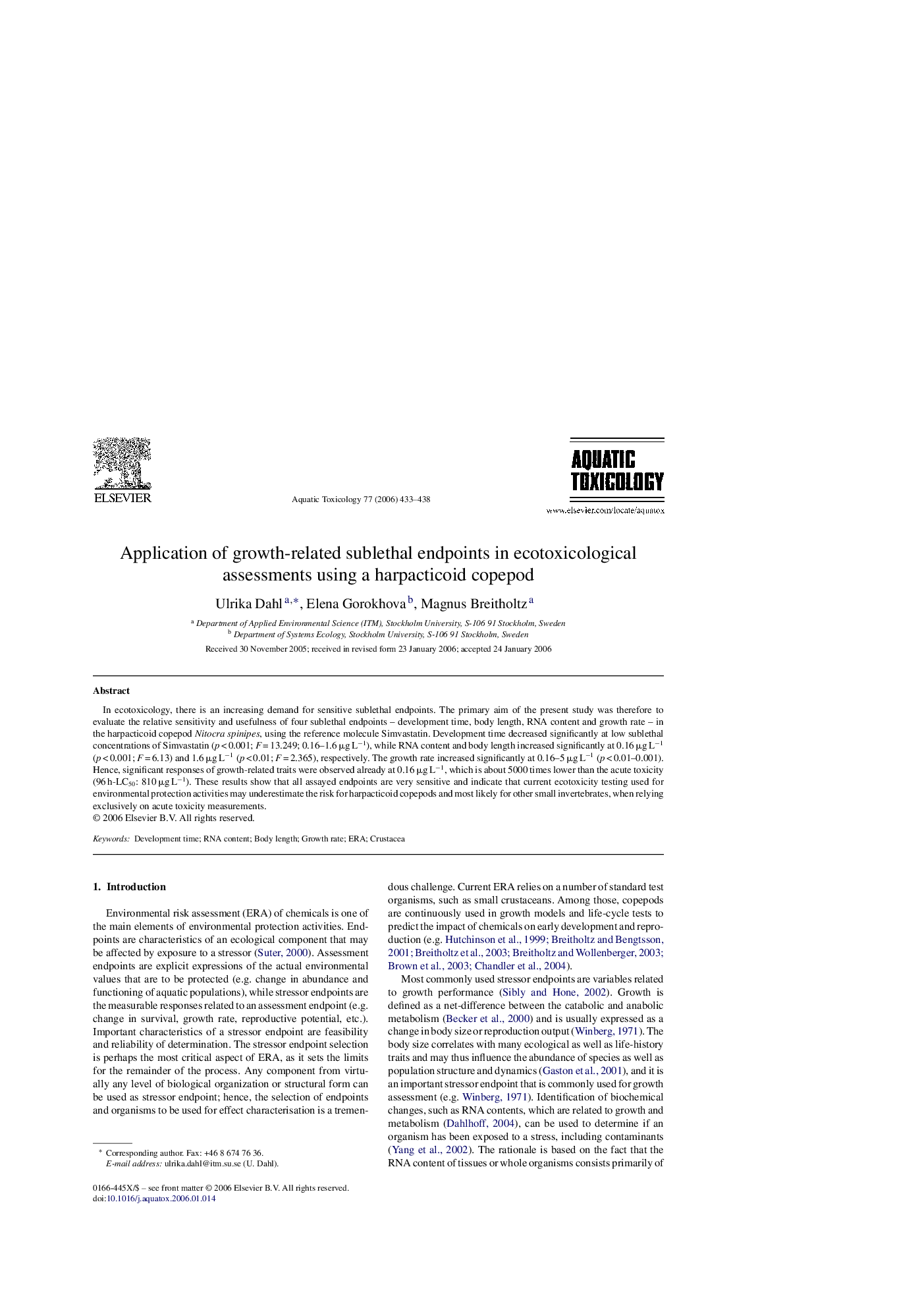| Article ID | Journal | Published Year | Pages | File Type |
|---|---|---|---|---|
| 4531329 | Aquatic Toxicology | 2006 | 6 Pages |
In ecotoxicology, there is an increasing demand for sensitive sublethal endpoints. The primary aim of the present study was therefore to evaluate the relative sensitivity and usefulness of four sublethal endpoints – development time, body length, RNA content and growth rate – in the harpacticoid copepod Nitocra spinipes, using the reference molecule Simvastatin. Development time decreased significantly at low sublethal concentrations of Simvastatin (p < 0.001; F = 13.249; 0.16–1.6 μg L−1), while RNA content and body length increased significantly at 0.16 μg L−1 (p < 0.001; F = 6.13) and 1.6 μg L−1 (p < 0.01; F = 2.365), respectively. The growth rate increased significantly at 0.16–5 μg L−1 (p < 0.01–0.001). Hence, significant responses of growth-related traits were observed already at 0.16 μg L−1, which is about 5000 times lower than the acute toxicity (96 h-LC50: 810 μg L−1). These results show that all assayed endpoints are very sensitive and indicate that current ecotoxicity testing used for environmental protection activities may underestimate the risk for harpacticoid copepods and most likely for other small invertebrates, when relying exclusively on acute toxicity measurements.
